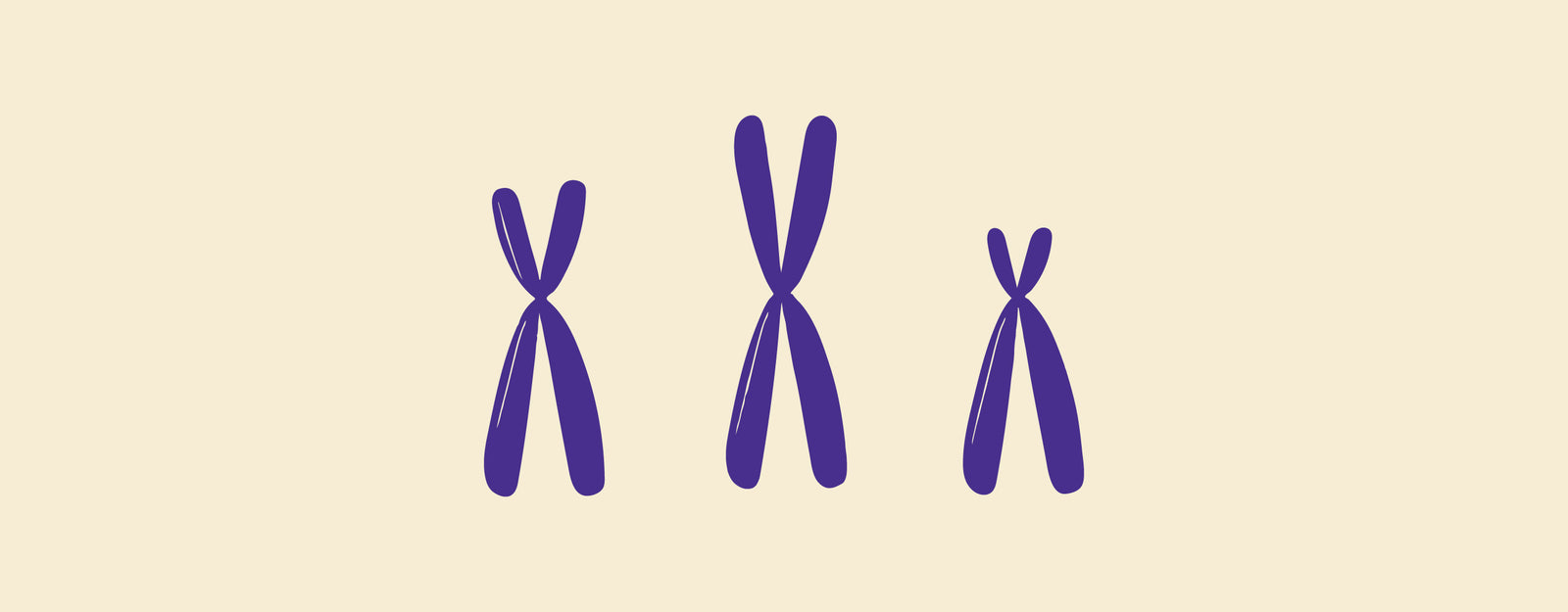Difference Between Autosomes and Sex Chromosomes: Our genetic blueprint comes in two main types - autosomes and sex chromosomes. The key difference lies in their number and function. We inherit 22 pairs of autosomes, one from each parent, which determine traits like eye color and height. These pairs look similar and carry the same genes. In contrast, the sex chromosomes, X and Y, determine our biological sex. Females have two X chromosomes, while males have one X and one Y. The Y chromosome is significantly smaller and carries fewer genes related to sex determination and other traits.
Difference Between Autosomes and Sex Chromosomes
The nucleus of eukaryotic cells, including humans, contains two types of chromosomes: autosomes and sex chromosomes. Here's a summary of each and the differences between the two:
|
Feature |
Autosomes |
Sex Chromosomes |
|
Type |
Non-sex chromosomes |
Sex chromosomes |
|
Presence |
Present in both males and females |
Present in both males and females |
|
Function |
Determine most of an organism's traits |
Determine the sex of an organism |
|
Number |
22 pairs in humans (44 autosomes) |
One pair in humans (XX in females, XY in males) |
|
Recombination |
Undergo genetic recombination during meiosis |
Do not typically undergo recombination |
|
Disorders |
Mutations can result in genetic disorders |
Mutations can result in disorders like Turner syndrome or Klinefelter syndrome |
|
Inheritance |
Follow Mendelian principles |
Inheritance patterns differ due to hemizygosity in males |
|
Role in sex determination |
Not involved |
Crucial role in sex determination during fertilization |
|
Naming convention |
Numbered according to size (chromosome 1 is the largest) |
Named based on morphology (X and Y) |
|
Equal distribution |
Disorders affect males and females equally |
Inheritance patterns may differ due to hemizygosity in males |
Browse Best Scrubs Collection
What is Autosomes?
Autosomes are the chromosomes responsible for our physical characteristics such as eye colour, height, and blood type. Humans have 22 pairs of autosomes, with one from each parent. They are numbered generally according to size, with chromosome 1 being the largest.
Key Features of Autosomes:
- These chromosomes do not directly define a person's biological sex. They contain genes for the majority of human features, with the exception of those directly related to sex development.
- Humans have 22 pairs of autosomes. We inherit one copy of each pair from each parent, resulting in 44 autosomes in each cell.
- An autosomal pair consists of two chromosomes that are comparable in size and form, as well as carrying the same gene types. Consider them matching pairs of socks!
- Autosomes include genes for a wide range of characteristics, including eye colour, blood type, and illness susceptibility.
What is Sex Chromosomes?
Sex chromosomes determine an individual's biological sex. Females usually have two X chromosomes (XX), whereas men have one X and one Y chromosome (XY). These chromosomes carry genes that regulate sexual development and hormone production.
Key Features of Sex Chromosomes:
- These chromosomes directly influence an individual's biological sex. Humans typically have two sex chromosomes, either XX (female) or XY (male).
- The X chromosome is larger than the Y chromosome, and they carry different sets of genes. While some genes overlap, many are unique to each chromosome.
- The X chromosome carries numerous genes unrelated to sex that can influence various traits. Because males only have one X chromosome, they are more likely to express X-linked recessive traits.
- Sex chromosomes carry the genes responsible for sexual development, secondary sex characteristics, and some sex-linked traits like color blindness.
Shop Best Lab Coats from Here!
Similarities Between Autosomes and Sex Chromosomes
- The nucleus contains two types of chromosomes: autosomes and sex chromosomes.
- They both store genetic information in the form of DNA.
- Both go through processes like replication and segregation during cell division.
- Autosomes and sex chromosomes help determine an organism's genotype and phenotype.
- Both can carry genetic alterations that can cause illnesses or problems.
The two main forms of chromosomes present in living creatures' cells are autosomes and sex chromosomes. The major distinction between autosomes and sex chromosomes is their function. Autosomes, which are present in identical pairs, carry genetic information that determines an individual's general traits such as height, eye colour, and susceptibility to illnesses. Humans have 22 pairs of autosomes. In contrast, sex chromosomes determine a person's biological sex. Humans usually have two sex chromosomes: females have two X chromosomes (XX), whereas men have one X and one Y chromosome. The genes on the sex chromosomes regulate sex-related features and development.
| Check out More Articles | |
| Difference Between Cartilage and Bone | |
| Difference Between Endocrine and Exocrine Glands | |
| Difference Between Cell Wall and Cell Membrane | |















